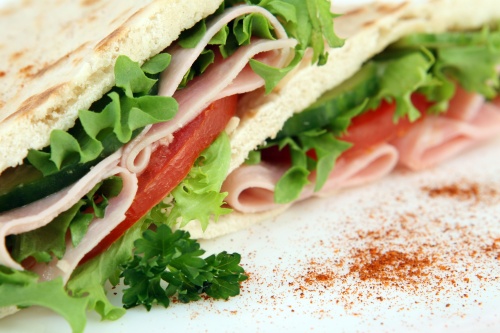Everyone in Britain is aware that this country has some of the worst eating habits in Europe, and as such has an obesity problem to match. However, it appears that it is not simply commercial property chip shops and kebab houses that are causing Britain’s waistlines to expand – even the so called “healthy options” can carry a heavy cost when it comes to calories.

High street commercial properties such as Pret a Manger, Greggs and even commercial property supermarket Aldi have been criticised for misleading customers about healthy eating in the sandwiches many office workers choose to have for lunch every day.
Consumer website Which? has posted the calorie count, fat content and percentage of salt in a range of healthy sandwiches such as chicken salad, egg mayonnaise and BLT (bacon, lettuce and tomato). The study compared the nutrition levels of the sandwiches across 15 commercial property chains, which included coffee shops, supermarkets and specialist chains.
In general, the calorie content in sandwiches sold across the separate commercial properties tended to vary greatly. For example, in Pret a Manger, a BLT contained 248 calories, while high street commercial property Boots offered a slightly more slimline option at only 179 calories. However, more worrying is the fat and salt content – Pret a Manger’s BLT had 28.8 grams of fat and 2.95 grams of salt.
An adult is supposed to take in 6 grams of salt per day, meaning that in a single sandwich from Pret a Manger, commercial property workers choosing to eat there could be inadvertently ingesting almost half of their recommended daily allowance. Too much salt in a person’s diet can lead to high blood pressure, an increased risk of strokes and even early death due to heart disease.
Jim Winship, director of the British Sandwich Association, said; “The variations quoted in the report are not surprising given the differences in recipes and price points between brands.
“The quality of ingredients can make a huge difference as can factors such as the thickness of the bread used in a particular sandwich, the proportion of each ingredient used and particularly the amount of lettuce used.
“We have always encouraged clear labelling on sandwiches so that consumers can make a reasoned choice if they wish to do so.
“All major retailers provide information either on the front or back of the pack and most provide much more than they are required to as they see it as part of their responsibility to consumers to work with the Government to encourage healthier diets.”
Which? pioneered the study in an attempt to make the Government realise the benefits of a traffic light system, which is already in use by commercial property chains such as Waitrose and Tesco. Red, amber and green highlights are used to show consumers whether their choice of lunch is high or low in nutrients such as saturated fat, salt, sugar and calories in general. It has been proven to be an efficient system in the commercial properties already labelling their foods clearly in this manner; however, only six of the 15 commercial property chains included in the study currently operate a traffic light labelling system.
Executive director of Which?, Richard Lloyd, says; “With obesity levels reaching epidemic proportions, it is more important than ever that consumers know exactly what they’re eating.
“Many retailers are already using traffic light labelling, but the rest need to catch up and do what works best for consumers.
“We want to see the Government insist that all food companies use traffic lights on their labels, so there’s a clear, consistent system that makes it easier for people to make informed choices about what they eat.”
Do you often find yourself buying food from commercial properties outside the office, and have no idea how many calories are in your daily lunch? Do you think the traffic light system would work, or would people simply ignore them as many already do with nutrition labels found on the packaging?